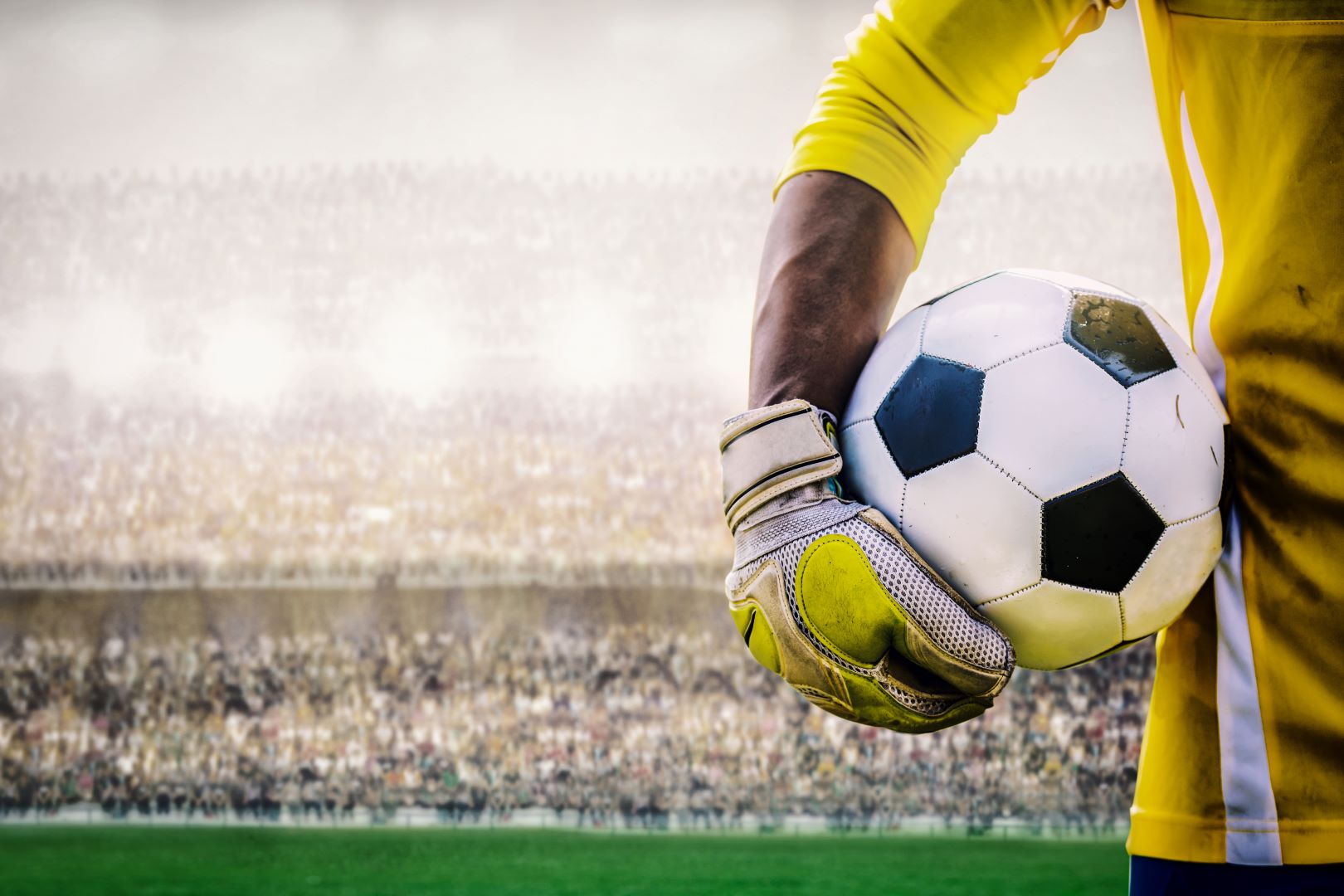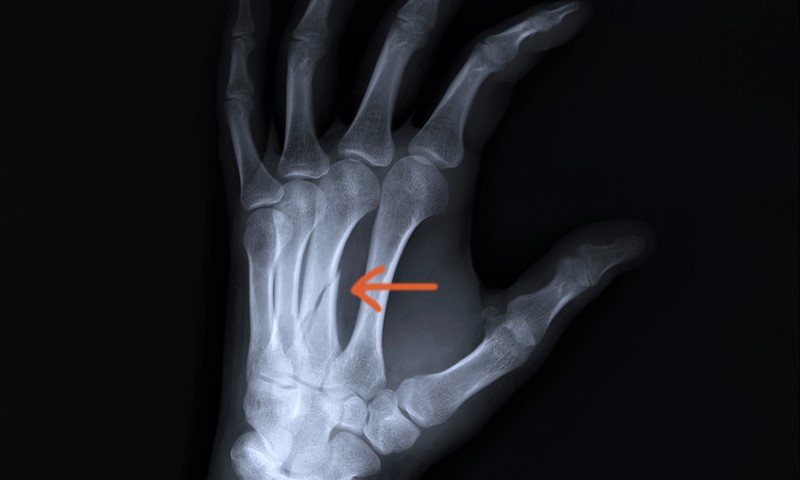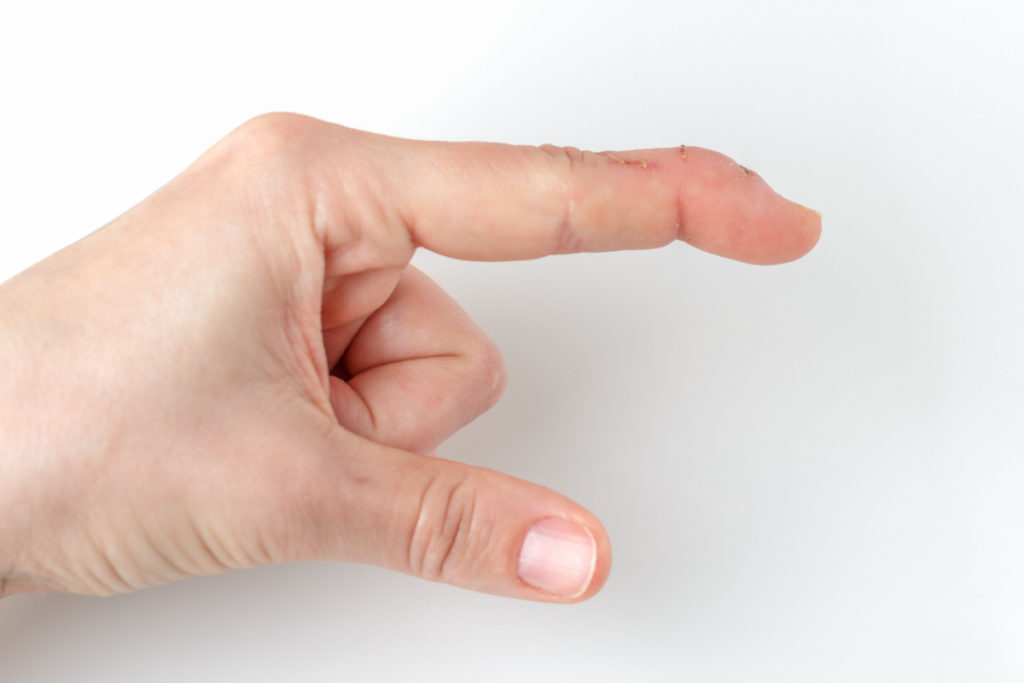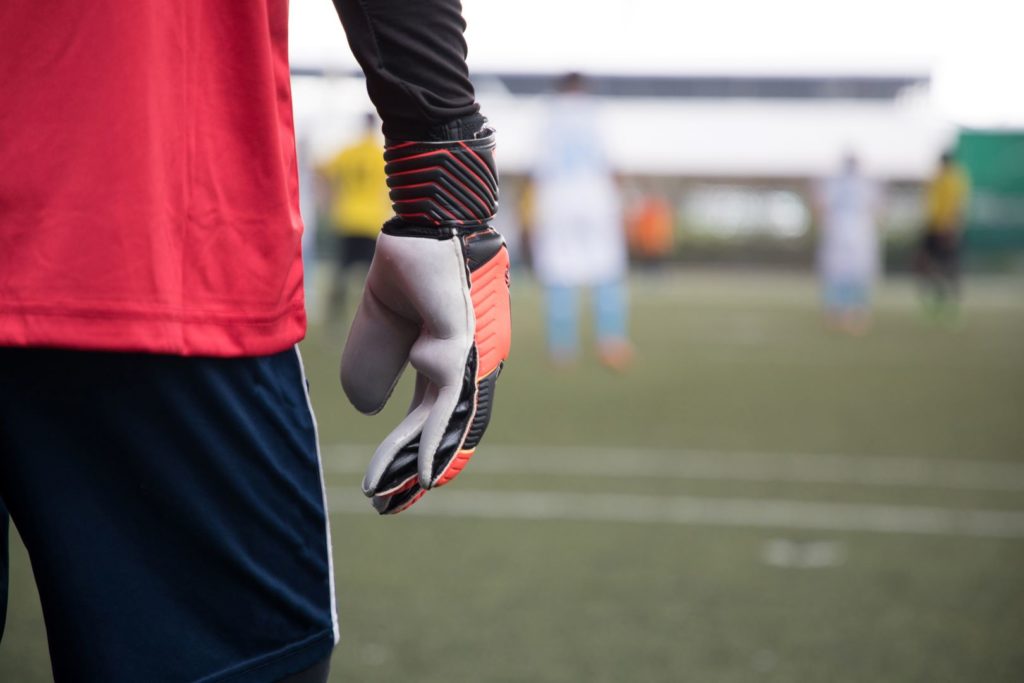Football is at the heart of sports culture within the UK and stands as one of the most popular sports worldwide. According to FIFA, there are over 300,000 clubs and 240 million players globally. With such widespread participation, injuries are an all-too-common reality for many of these athletes.
For goalkeepers, in particular, the risk of injury is heightened. To protect their net and prevent the opposing team from scoring, goalkeepers often put their bodies on the line. This role demands not only physical endurance but also places significant stress on the hands. The repetitive impact and strain involved in blocking powerful shots can lead to a variety of hand injuries, making it a uniquely challenging position on the field.
In this blog, we will take a closer look at some common hand injuries you may suffer from as a goalkeeper, why they happen and how to prevent them.
Metacarpal Fractures
A metacarpal fracture is amongst the most common fractures, accounting for 1 in 10 of all broken bones. Injuries to the metacarpal bones in your hands, connecting the fingers and thumb to the wrist, are particularly prevalent in sports where the hands are frequently subjected to high-impact forces.
Symptoms of metacarpal fractures may include the following:
- Pain when moving the wrist or fingers
- Swelling
- Bruising
As a goalkeeper, you are likely to incur more risk of a metacarpal fracture than your fellow teammates. But why is this? When you try to stop a shot with your hands, the impact is absorbed from that point of contact, meaning a high speed impact to the hand can cause your wrists, hand and fingers to move and bend unnaturally.
These fractures can keep you out of the game for a significant amount of time, taking an average of 26 days to heal. Stable injuries can heal with the aid of a splint or cast, which in most cases will heal the bone back to health without any further complications. However, more severe breaks may require a closed reduction to realign your bones, delaying your return to the pitch.
Scaphoid Fractures
The scaphoid bone is one of the carpal bones on the thumb side of the wrist, sitting just above the radius. A scaphoid fracture is a breaking of one of the carpal bones in the hand or around the wrist area.
Symptoms of scaphoid fracture include:
- Swelling
- Tenderness
- Stiffness of wrists
- Bruising
Scaphoid fractures are especially common amongst goalkeepers, often resulting from the intense demands of their position; from stopping goals, falling onto outstretched hands, and colliding with other players. This fracture can either become non-displaced, meaning that there is a break but it remains aligned, or displaced, where the bone shifts completely out of position.
It’s important to recognise that scaphoid fractures don’t always cause severe pain, leading many players to overlook the possibility of a fracture. If left untreated, the fracture can bring about complications, such as reduced blood flow to the affected bone, which can impede proper healing. This lack of blood supply may result in the bones failing to fully realign, increasing your risk of developing arthritis in the affected area over time.
Finger Dislocations
Dislocating bones can be an uncomfortable experience, as a result of bones separating at the point where they meet the joint.
Symptoms of finger dislocations may include:
- Crooked looking finger
- Bruising of the entire finger
- Redness around the joint
Goalkeepers will often encounter finger dislocations, which are caused by the ball impacting the fingers, when trying to save a goal. Usually these types of dislocations are relatively minor, requiring the finger to be isolated and strapped or splinted until fully healed.
Mallet Finger Injuries
Mallet finger is an injury that affects the very tip of your finger, causing it to bend downward and lose the ability to straighten. This occurs when the tendon responsible for straightening the finger or thumb is overstretched and tears.
Symptoms of mallet finger include the following:
- Bruising
- Inflammation
- Detached fingernail
- Redness under the fingernail
Goalkeepers are among the athletes most prone to mallet finger injuries due to the demands of their position. In their attempts to catch a hard, fast-moving football, the force of the impact can easily damage the tendons. Depending on how the ball strikes the hand, goalkeepers may injure multiple fingers at once, complicating the healing process and potentially contribute to surgical intervention.
Preventative Measures for Goalkeepers
For goalkeepers, the hands are the most vital tools on the pitch. Protecting them should be a top priority to ensure they can make crucial saves without compromising their hand and wrist health. Here are some key preventative measures that goalkeepers can take to safeguard their hands.
Finger Support
Wearing goalkeeper gloves with built-in finger support is one of the most effective ways to reduce the risk of finger injuries. These gloves are typically designed with flexible spines embedded in the fingers, providing added stability and preventing overextension or unnatural bending. This support helps to absorb the force from powerful shots, reducing the likelihood of finger sprains, dislocations, or fractures.
Wrist Stability
Ensuring proper wrist stability is essential for preventing injuries during sudden, forceful movements. Goalkeeper gloves equipped with adjustable straps or wristbands offer enhanced support by securing the wrists in place. These straps help to limit excessive wrist motion, which can lead to sprains or strains when making saves.
Impact Absorption
The palm area of goalkeeper gloves plays a critical role in injury prevention by offering impact absorption. High-quality gloves are often lined with cushioning materials, such as latex foam, which act as a buffer between the hand and the ball. This padding helps to dissipate the force of the impact when catching or punching the ball, reducing strain on the hands and lowering the risk of injuries such as wrist fractures.
Customization and Fit
A well-fitted glove is crucial for both protection and performance. Goalkeepers should ensure their gloves are custom-fit, taking into account personal preferences and specific needs. Modern gloves offer various customisation options, including different wrist closure systems, finger protection configurations, and palm types.
Proper prevention strategies, such as using gloves with built-in finger support, ensuring wrist stability, and selecting custom-fitted equipment, are essential for minimising these risks. By prioritising hand health and taking proactive measures, goalkeepers can better protect themselves, maintain peak performance, and extend their careers in the beloved sport.
If you are concerned about a recent hand or wrist injury, get in touch with Ladan Hajipour.






